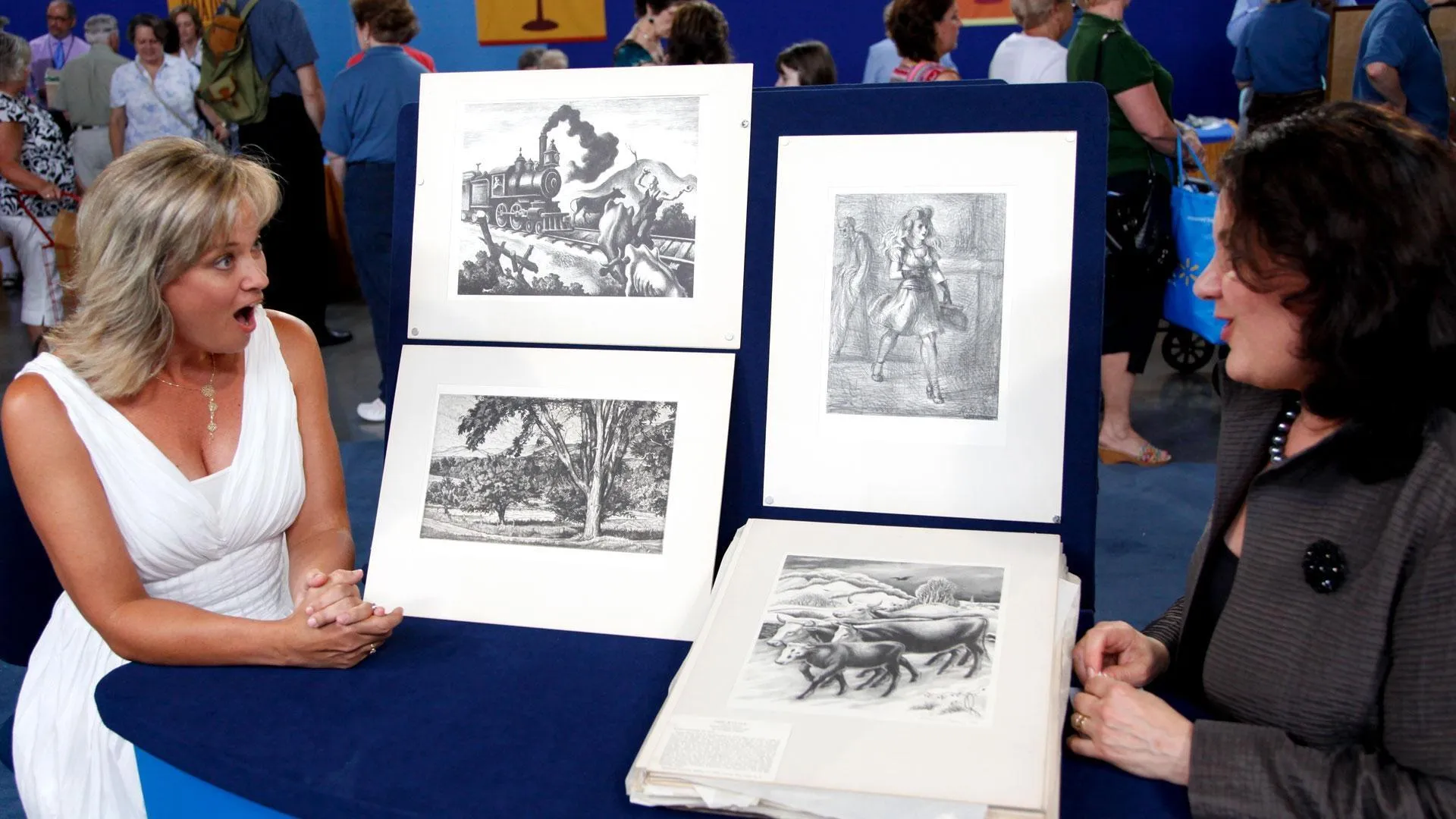GUEST: This guitar belonged to my husband's father, and in about 1944, it was about the time he and his wife married, she gave it to him as a gift. The story that's been passed down is she paid $65 for it at a department store, is what we were told.
APPRAISER: We're talking about the late war years.
GUEST: Mm-hmm.
APPRASER: And that's really what makes this instrument very special. During that time, materials were very scarce. Manpower was scarce. This guitar was made by Gibson Incorporated, of Kalamazoo, Michigan, which had already established itself as a major manufacturer of very high quality guitars. One thing that the wartime instruments are known for is what we call the banner logo,
GUEST: Right.
APPRAISER: …or the banner peghead that says "Only a Gibson is good enough." And that flew for a couple years before other people started to make fun of it, and they went on to something else.
GUEST: Oh, okay.
APPRAISER: But another marketing scheme that they had was... in the early '40s was to recognize the need for a big bodied guitar that they could say was sort of specialized for country western music.
GUEST: Oh, okay.
APPRAISER: And that's how they came up with the name Southern Jumbo. Originally it was called the Southerner Jumbo. And during the war, when materials became scarce, they used to substitute different woods. But fortunately, this one was built towards the end of the war, so they were not experiencing so many of the shortages, especially in the area of metal parts. And we see the truss rod cover up here. There's actually a rod running through the neck that reinforces it. And if the neck warps a little bit, you can actually tighten it and straighten out the neck. So that's what that does, okay. So that disappeared during the real lean war years. But by 1944, 1945, it came back. And the back is made of a very, very colorful piece of mahogany, which I think is a great acoustic wood. The wartime instruments also have this characteristic skunk stripe. And that's a black lamination. So this neck is actually a lamination of one, two, three, four, five pieces of wood. So we've got a piece that's in wonderful condition. As we go down lower, we see the actual bridge here.
GUEST: Right.
APPRAISER: And this is a design called the belly bridge, for this belly that protrudes underneath.
GUEST: Oh.
APPRAISER: That actually makes it a little more of a desirable guitar.
GUEST: Really?
APPRAISER: All these things add up to a guitar that, in today's somewhat uncertain market, places it at the top of the list of desirability.
GUEST: Okay.
APPRAISER: Now, yours just happens to be in, shall we say, drop-dead gorgeous condition.
GUEST: Really?
APPRAISER: It's pretty much unplayed. I think that in today's market I would place the retail value of this guitar at $9,000 to $10,000.
GUEST: Wonderful.
APPRAISER: Especially with a case in that wonderful condition.
GUEST: That's great. Thank you very much.











